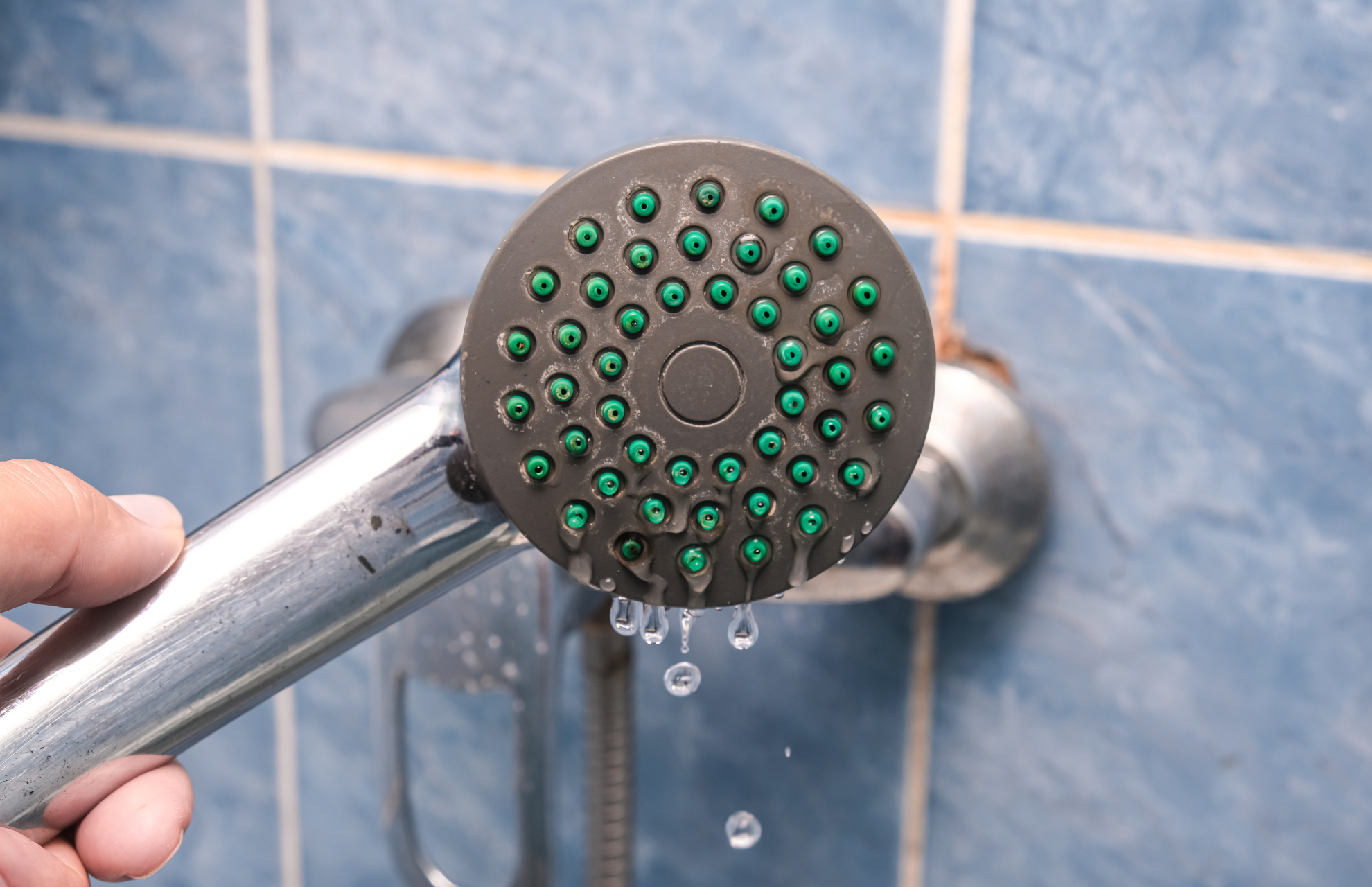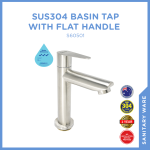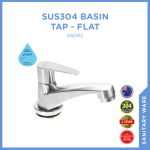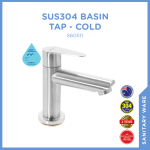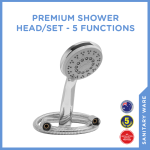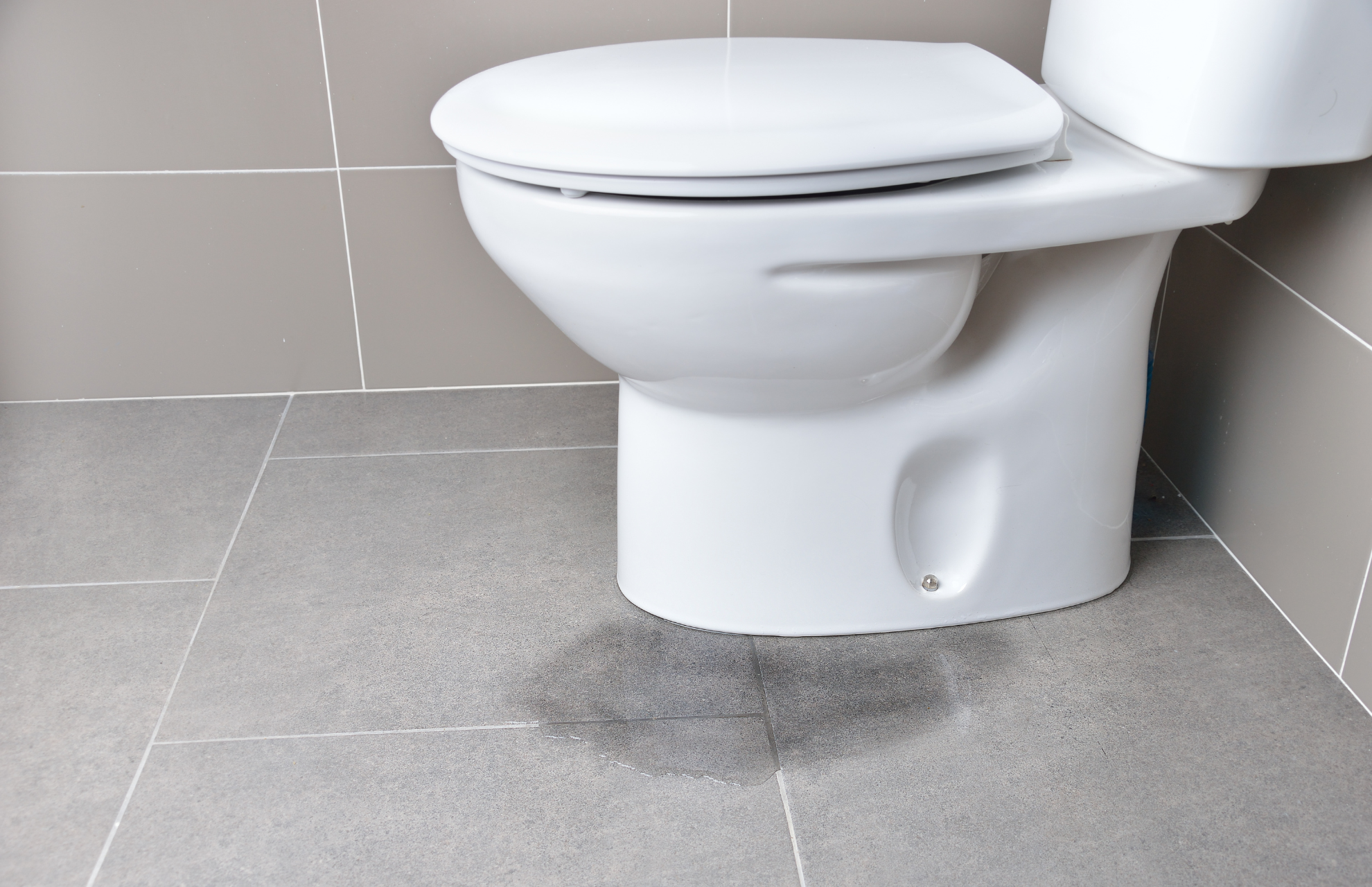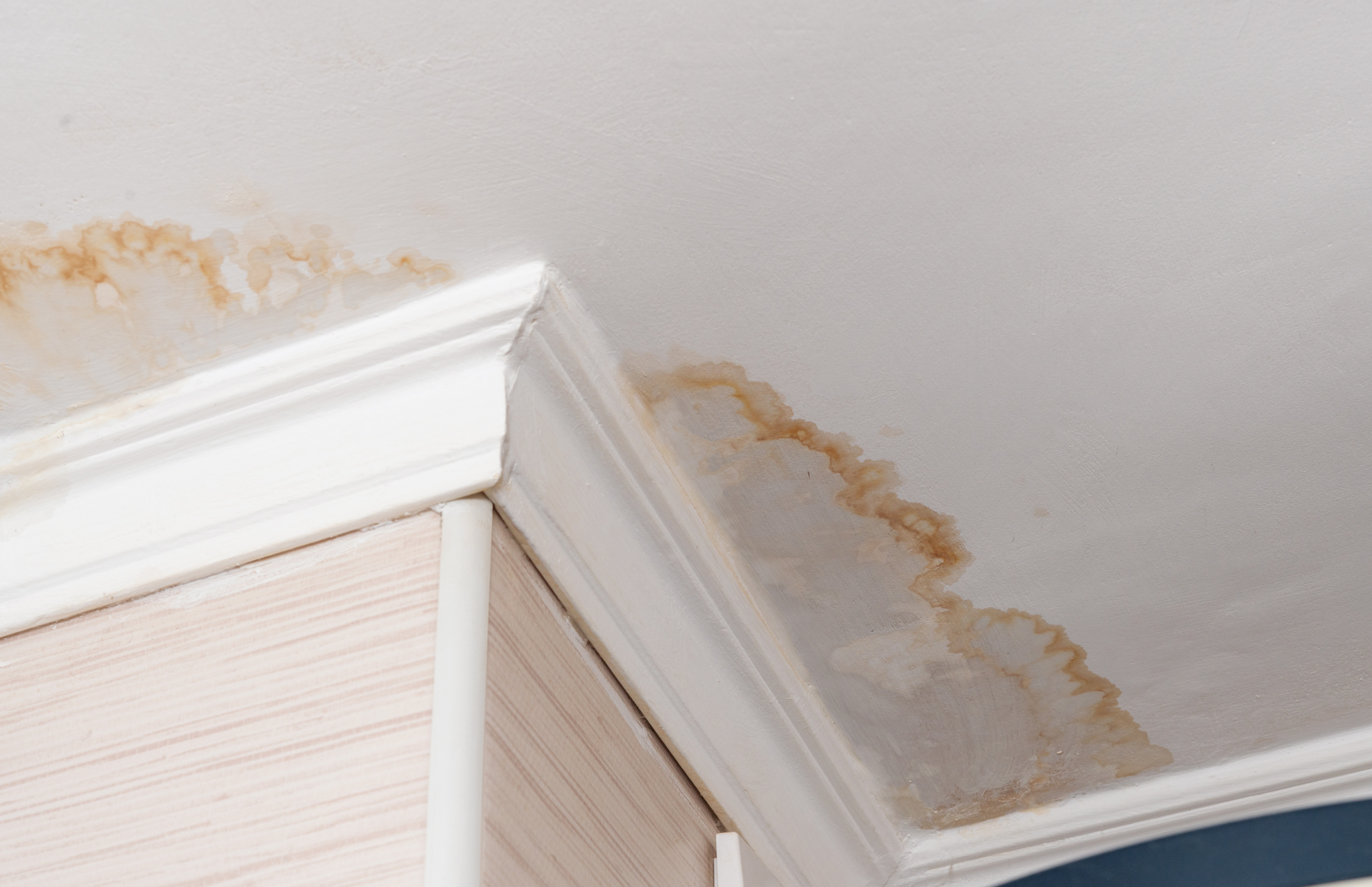Your cart is currently empty!
Water leaks at home can be a frustrating and costly issue for homeowners. It can cause damage to your property, resulting in expensive repairs and increased water bills. Ignoring a leak can lead to even more severe problems, such as mould growth and structural damage. Thus, promptly addressing a leak is crucial in preventing such complications.
In this article, we’ll discuss the most common areas where water leakages occur, namely taps and showerheads, toilet bowls and ceilings. We’ll also explore the causes of such leaks and provide solutions to help you fix them.
Table of Contents
Water Leaking From Taps And Showerheads
Do you know that leaking water taps and showerheads can waste over 11,350 litres of water per year? To prevent such wastage, it’s crucial to identify the cause of the leak and fix it as quickly as possible!
Causes of a leaking tap or showerhead
- Damaged or broken parts: When components of a tap or showerhead such as the o-ring, washer or cartridge become damaged, a water leak can occur.
- Obstructed water flow: Dirt, grime and limescale that accumulate in your showerhead can obstruct water flow, leading to leaks.
- Overly high water pressure: Excess water can build up in your pipes when the water pressure is too high. This heightened pressure may eventually force water to seek an escape route, causing a leak.
How to identify a leaking tap or showerhead
If you suspect that a tap or showerhead is leaking, you can do a simple check to verify this.
- Ensure all water taps and appliances in your home are turned off.
- Record the reading on your water meter.
- Allow 2 – 3 hours to pass before rechecking the meter.
- If there is a change in the meter reading during this time, you likely have a water leak.
How to fix a leaking tap or showerhead
Replace damaged or broken parts
If the leak is caused by a damaged or broken component within the tap or showerhead, resolving the issue may be as straightforward as replacing the faulty part. You can conveniently acquire the replacement part at your nearest hardware store, but be sure to bring the original piece along with you to ensure that you’re purchasing the correct part.
Clean the showerhead
Cleaning your showerhead regularly can help prevent water leaks caused by a buildup of dirt, grime, and limescale. To clean your showerhead, follow these steps:
- In a heat-resistant container or plastic bag, mix Selleys Multi-Purpose Descaler and hot water in a 1:20 ratio.
- Completely immerse the showerhead in the solution. If you’re using a plastic bag, seal the bag using a rubber band.
- Allow it to soak for a minimum of 20 minutes.
- Once the time is up, remove the showerhead from the bag or container and rinse it thoroughly with water.
- Use an old, clean toothbrush to scrub away any accumulated dirt, grime, or limescale, paying close attention to the nozzles.
- Rinse the showerhead once more with water to get rid of any remaining traces of dirt.
Adjust the water pressure
If your tap or showerhead is leaking due to high water pressure, slowly adjust the water pressure regulator in your home to an appropriate level.
Replace the fixture
If the aforementioned methods fail to resolve the water leak, you might want to consider replacing your tap or showerhead entirely. Selleys Singapore offers a curated selection of affordable showerheads and taps, including bathroom and kitchen taps.
-
 Chrome Basin Tap With Flat Handle$38.77 – $40.93
Chrome Basin Tap With Flat Handle$38.77 – $40.93 -
 SUS304 Basin Tap With Flat Handle (S60501)$35.53
SUS304 Basin Tap With Flat Handle (S60501)$35.53 -
 SUS304 Basin Tap With Stick Handle$33.37 – $35.53
SUS304 Basin Tap With Stick Handle$33.37 – $35.53 -
 SUS304 Kitchen Sink Tap$42.66 – $44.28
SUS304 Kitchen Sink Tap$42.66 – $44.28 -
 Chrome Kitchen Sink Tap$39.42 – $40.50
Chrome Kitchen Sink Tap$39.42 – $40.50 -
 SUS304 Basin Tap – Flat (S6002)$46.98
SUS304 Basin Tap – Flat (S6002)$46.98 -
 SUS304 Basin Tap – Cold (S60511)$44.28
SUS304 Basin Tap – Cold (S60511)$44.28 -
 Classic Shower Head/Set – 5 Functions$13.50 – $20.52
Classic Shower Head/Set – 5 Functions$13.50 – $20.52 -
 Premium Shower Head/Set – 5 Functions$21.60 – $29.70
Premium Shower Head/Set – 5 Functions$21.60 – $29.70
Water Leaking From The Toilet Tank
Do you hear the sound of water constantly flowing from the tank into your toilet bowl? If so, you could be dealing with a water leak. Understanding the possible causes of the leak is essential for fixing the problem and preventing water wastage.
Causes of a leaking toilet tank
The 2 most common causes of a leaking toilet tank are a faulty toilet flapper and a toilet float that is too high.
- Faulty or damaged toilet flapper: Over time, minerals found in the water can accumulate on the toilet flapper (also known as the flush valve), preventing it from resting fully on the valve seat. As a result, water leakage can occur. The toilet flapper can also decay, causing water to leak from the tank into the toilet bowl.
- Toilet float that is too high: When the toilet float is too high, the water level in the tank will exceed the overflow tube. Excess water will then flow into this tube and leak into the toilet bowl.
How to identify a leaking toilet tank
To check for a faulty toilet flapper, lift the lid of the toilet tank and add a drop of food colouring into the tank. Allow the water to sit undisturbed for 10 minutes without flushing. If you notice the colour bleeding into the bowl, it indicates a leak. After this test, be sure to flush the toilet promptly to avoid staining the tank.
On the other hand, to determine whether the toilet float is set too high, lift the lid of the toilet tank and check if the water level exceeds the overflow tube. If you observe water flowing into the overflow tube, the toilet float position is probably too high.
How to fix a leaking toilet tank
Replace the toilet flapper
If the toilet flapper is faulty or damaged, you’ll need to replace it to prevent water from leaking from the tank into the toilet bowl. Here are the steps to replace the flapper:
- Shut off the water supply to the toilet by turning the shutoff valve.
- Flush the toilet to drain the tank completely.
- Disconnect the old flapper from the tank.
- Attach the new flapper to both the flush valve and the flush handle.
- Adjust the chain length so that the flapper opens and closes smoothly.
- Turn the water supply back on and test the new flapper.
Adjust the toilet float
Depending on the mechanism of your toilet float, you may have to either bend the connecting rod or utilise a screwdriver to adjust the float’s height. When making this adjustment, ensure that the float is positioned at a level where the water remains just below the overflow tube.
Water Leaking From The Ceiling
Water leakages can also originate from your ceiling, causing unsightly water stains, peeling paint and unpleasant odours. Additionally, the elevated levels of humidity promote mould growth, which poses health risks to you and your loved ones.
Causes of a leaking ceiling
Water leaks from your ceiling can be caused by a leaking pipe, worn-out waterproof membrane or damaged roof.
- Leaking or burst pipe: When you have leaking pipes, you may notice water dripping from your ceiling. This typically leads to the formation of small puddles under the affected plumbing areas. In contrast, burst pipes cause significant and immediate leaks that require urgent attention.
- Worn-out waterproof membrane: In HDBs, water leakage issues are often due to the degradation of the waterproof membrane and screed in the floor slab, which typically occurs in the bathroom.
- Damaged roof: Roof leaks are most noticeable during rainy seasons. If you observe water dripping from your ceiling when it rains, it may suggest a damaged roof.
How to fix a leaking ceiling
Fixing ceiling leaks can be tricky. Engaging a professional plumber or contractor is often the best solution to the problem.
Engage a professional plumber
When faced with a plumbing issue, it’s best to engage a professional plumber. This is especially so for burst pipes, which often require immediate attention. A professional plumber will be able to fix the leak swiftly and effectively, reducing the water damage to your property.
Engage a contractor
If the cause of the water leak is a worn-out waterproof membrane or damaged roof, we recommend engaging an experienced contractor to troubleshoot and fix the problem.
Identifying the root cause of a damaged roof can be challenging for homeowners due to safety concerns and the complexity of the structure. Additionally, addressing issues with the floor’s waterproof membrane may require tile and screed removal, along with other repair work.
Thus, engaging a contractor to manage the repair work will provide peace of mind and prevent further damage to your ceiling and home.
FAQs About Water Leaks
What are some signs of a water leak?
When dealing with a water leak, you may notice signs such as:
• High water bills
• Mould growth
• Odours
• Water stains on your walls and ceiling
• Peeling paint
• Puddles of water around the fixture
How much does it cost to fix a water leak?
The cost of fixing a water leak will depend on the source and cause of the leak. Sometimes, a simple replacement of a faulty component may be sufficient, and the replacement is often inexpensive. However, the cost of fixing the leak is likely to increase if you have to replace the entire fixture.
In addition to repairing the leak itself, there is an extra expense associated with fixing any water-related damage. If the leak has caused significant damage to your home, the repair expenses could become substantial. As such, it’s crucial to fix any water leaks as soon as possible to avoid costly repair work.

